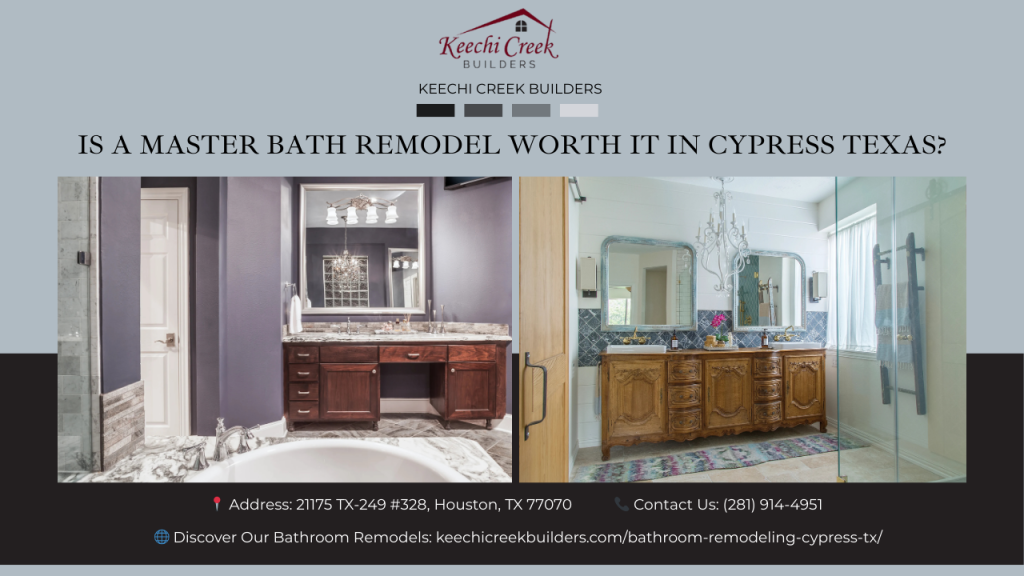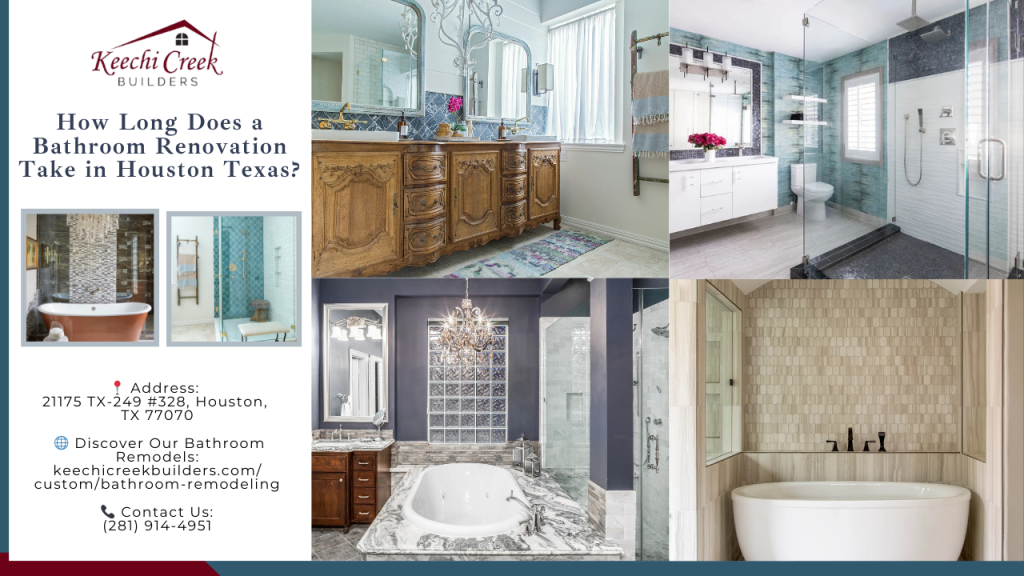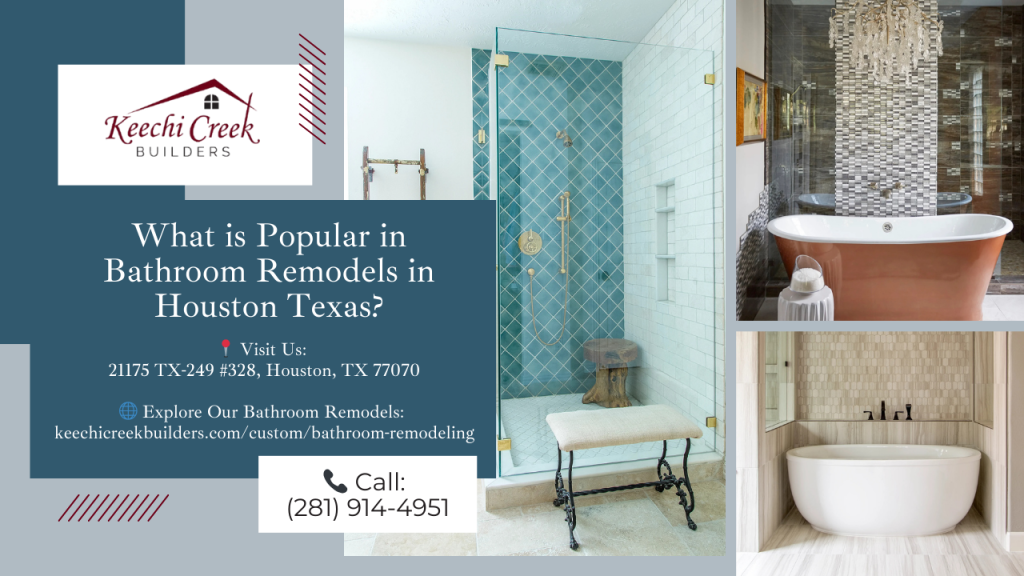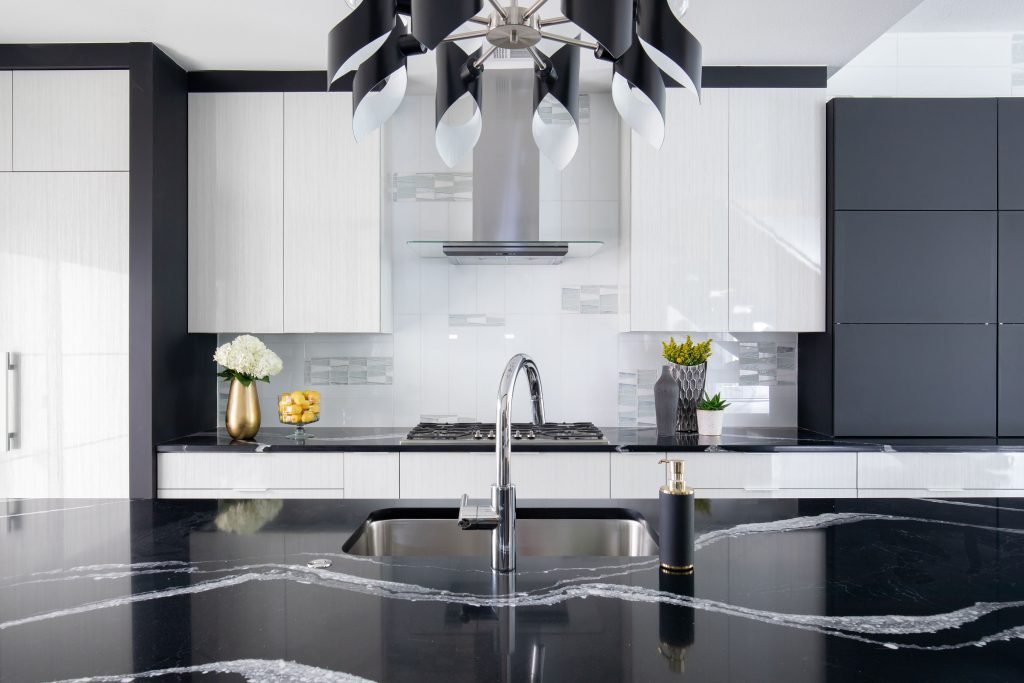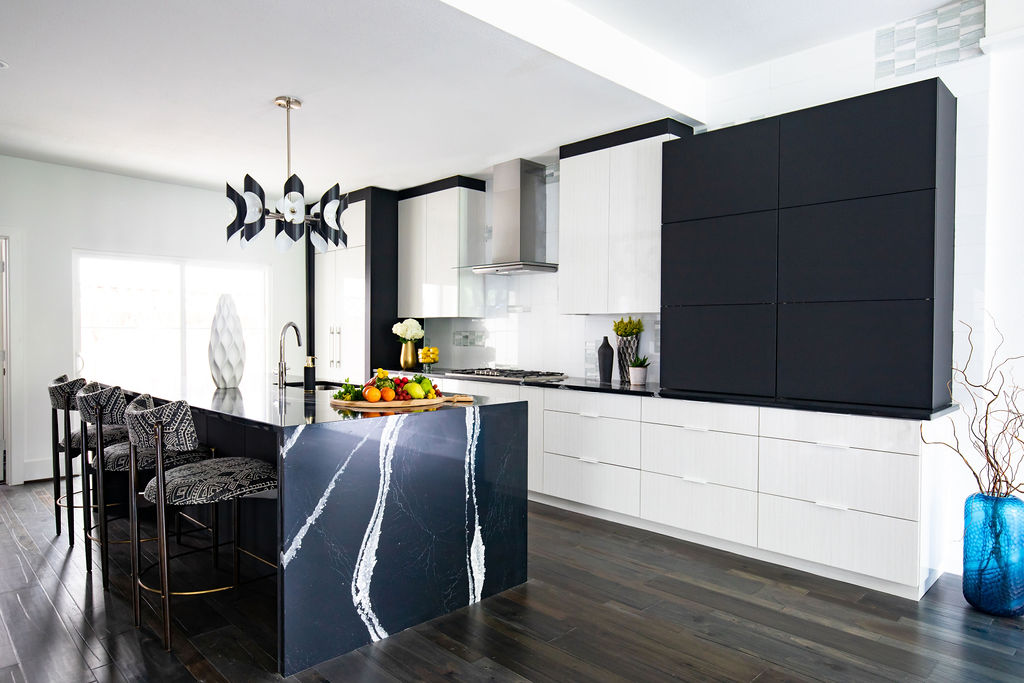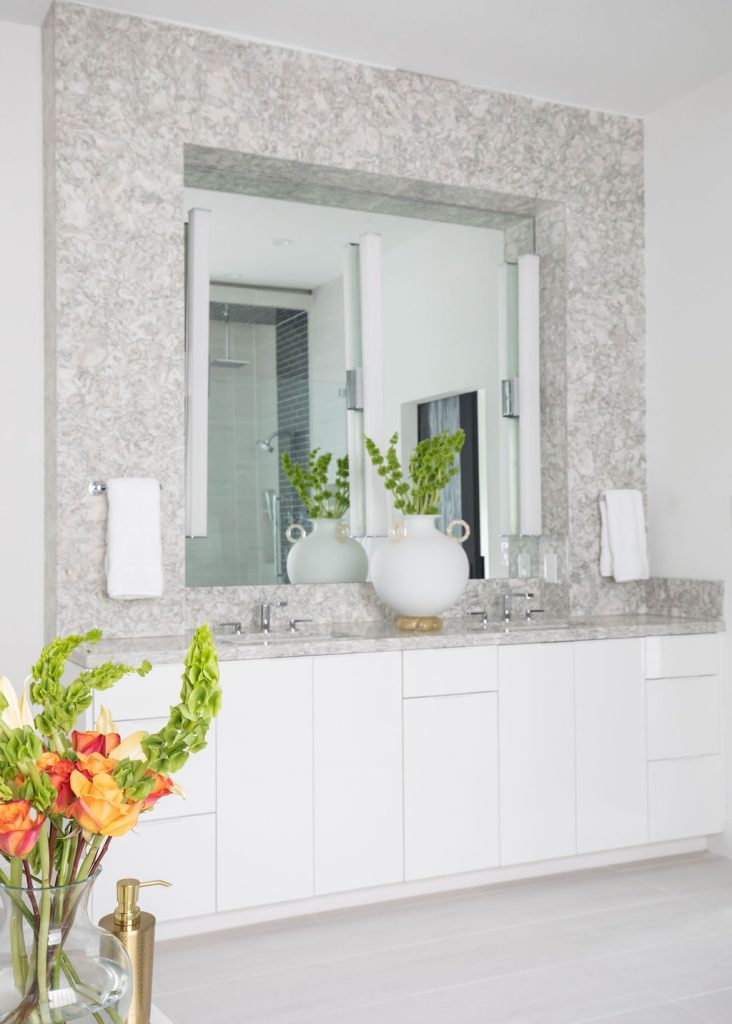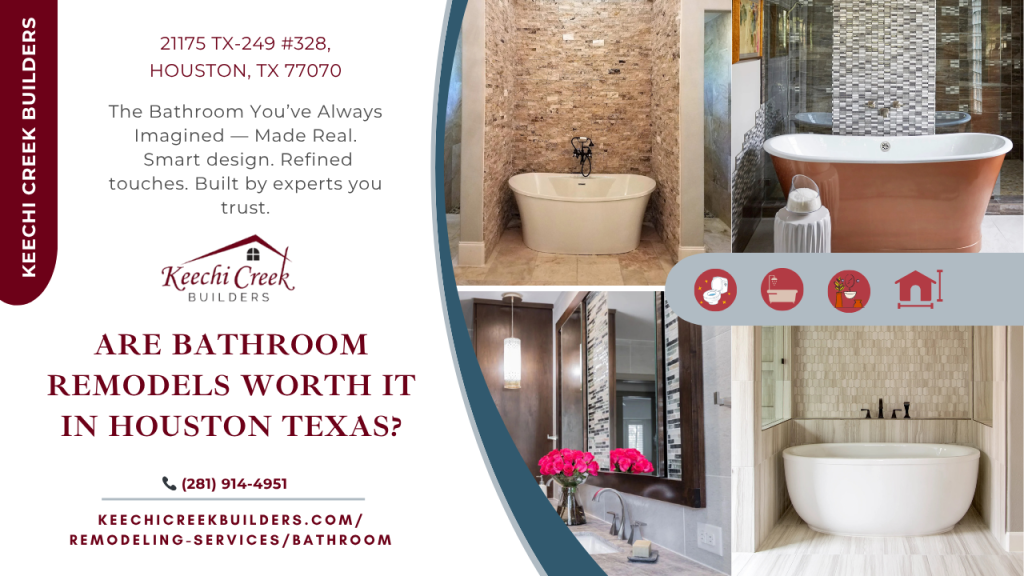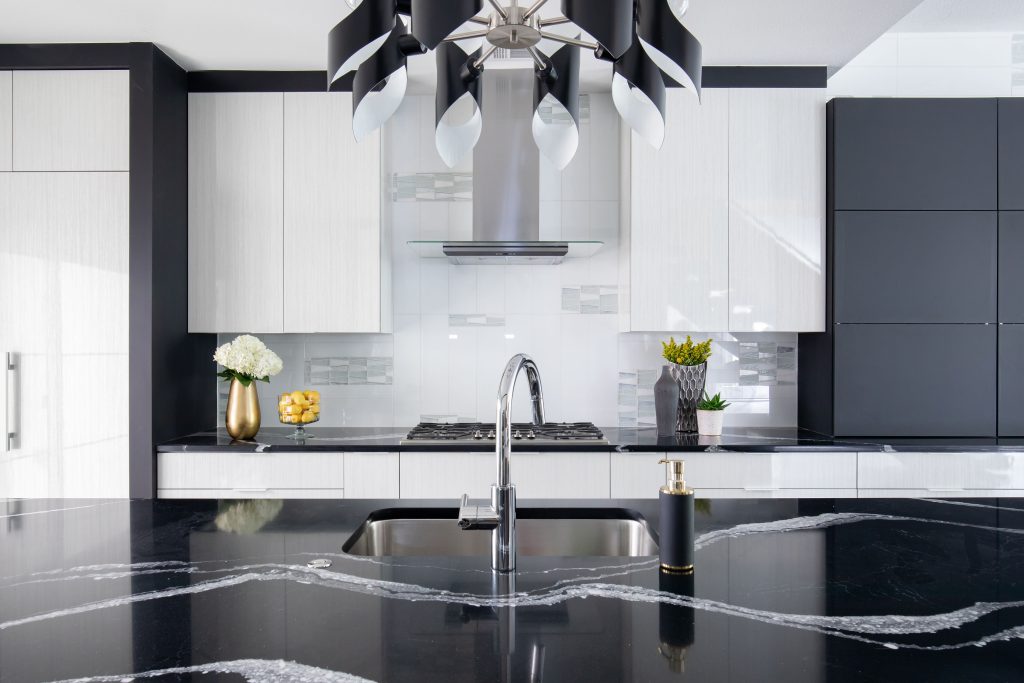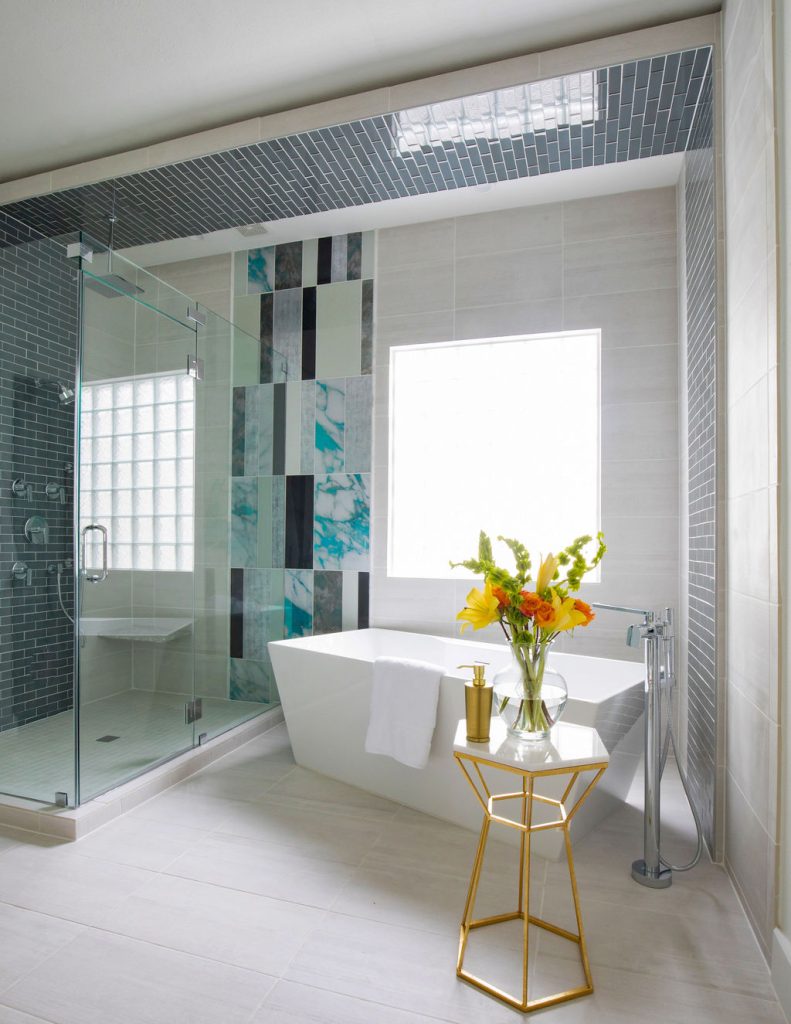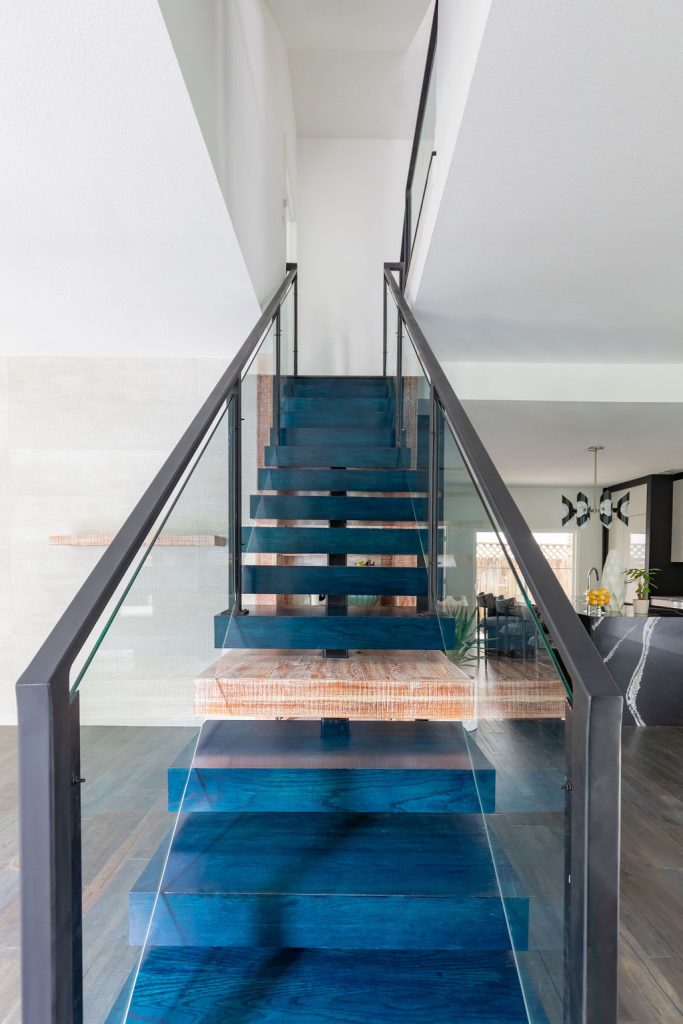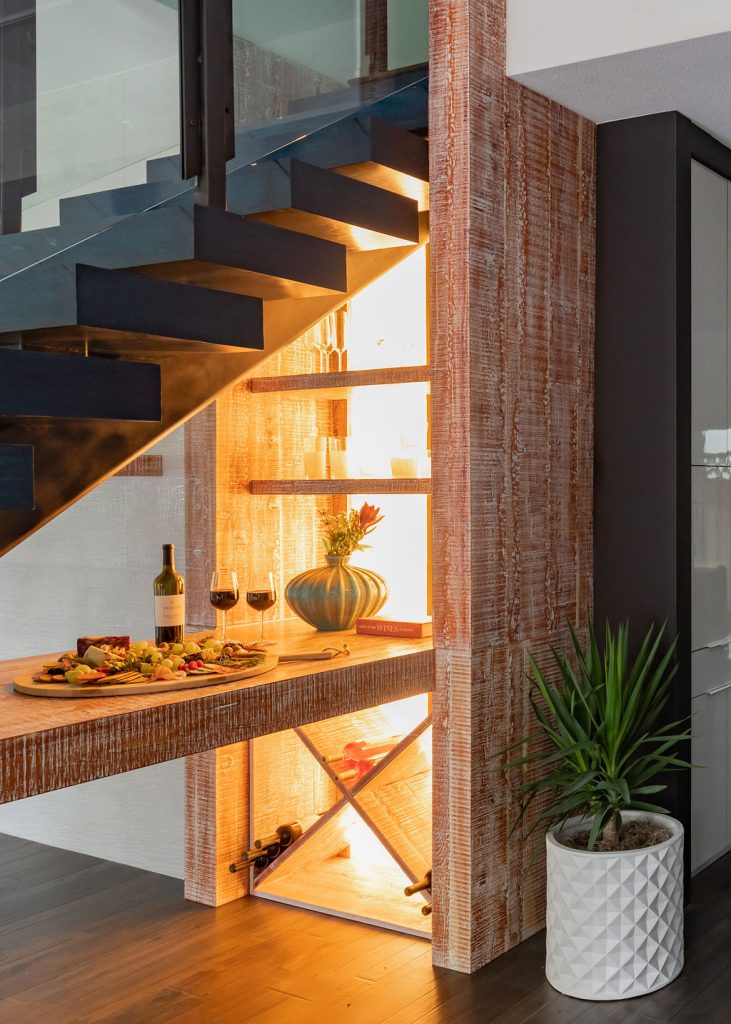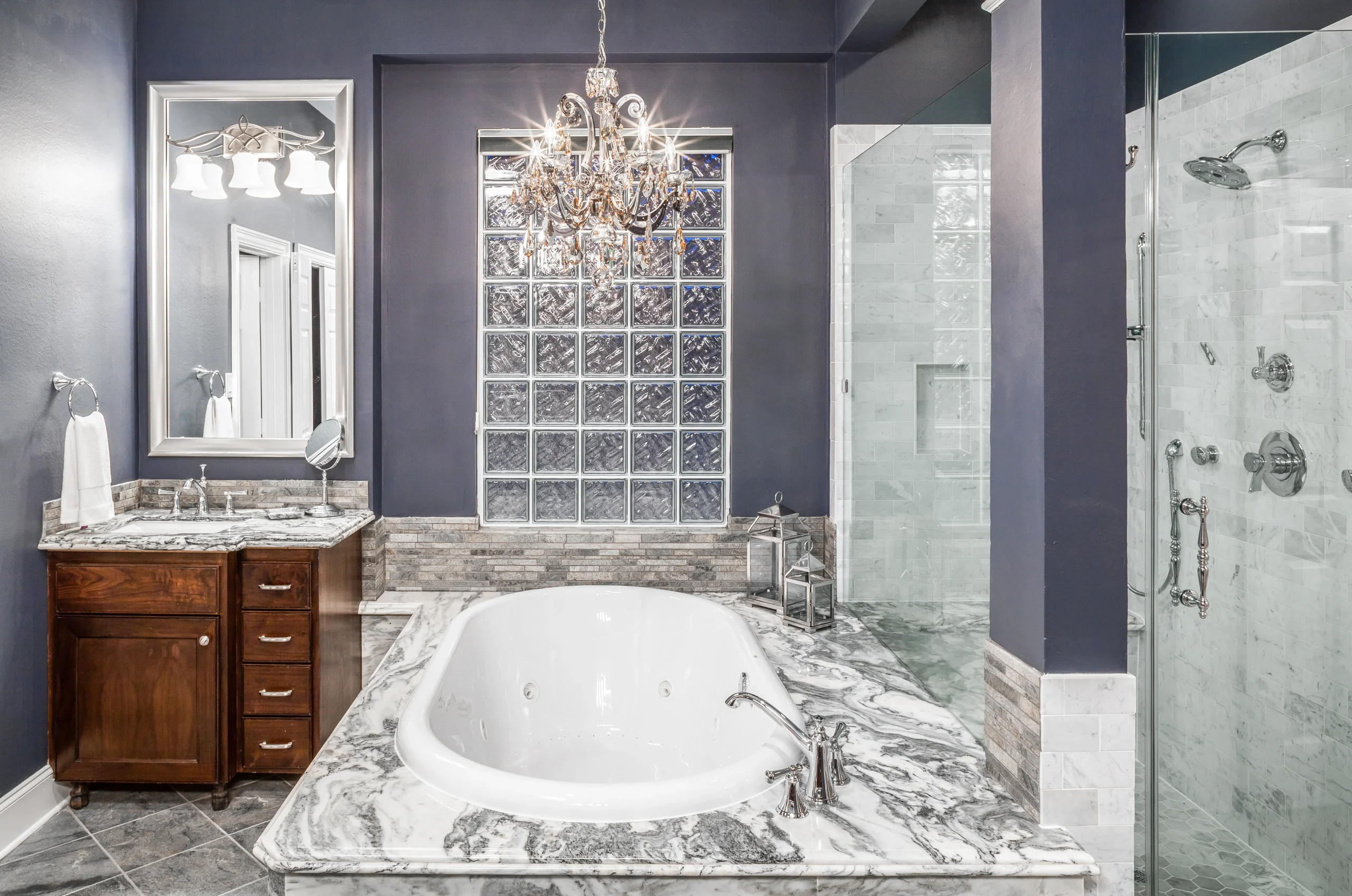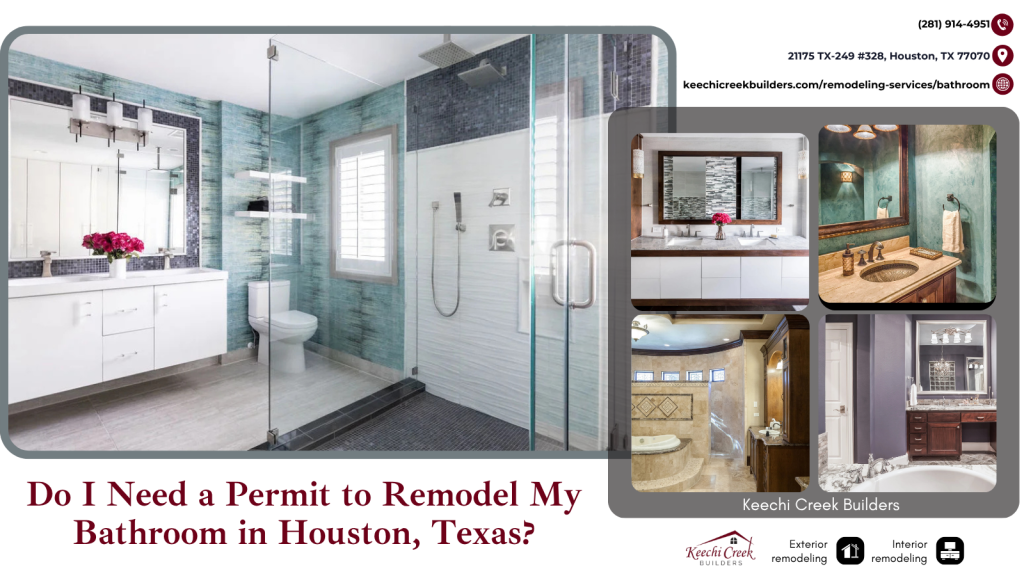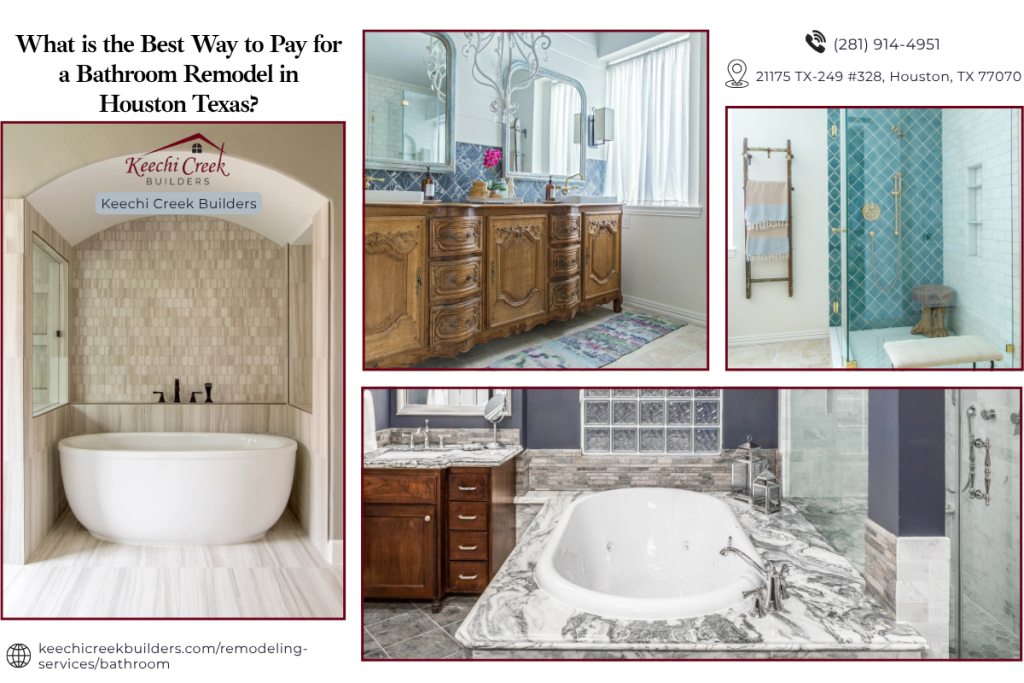What Adds the Most Value to a Bathroom Remodel in Memorial Texas?
In Memorial, Texas, the most valuable bathroom remodel investments focus on creating a luxury master bath with a walk-in shower, high-end finishes like quartz countertops, custom vanities, improved ventilation, and ample lighting, alongside integrating practical smart home features and ensuring style consistency with the rest of the home to maximize appeal and value.
Key Takeaways
- Walk-in showers are a top value driver in Memorial bathroom remodels, especially when replacing oversized tubs.
- Quartz countertops, custom vanities, and designer tiles elevate both luxury and longevity in high-end renovations.
- Smart home upgrades—like digital shower controls and motion-sensor lighting—add modern appeal and energy efficiency.
- Ventilation and moisture control are essential in Houston’s humid climate, preventing mold and extending remodel lifespan.
- Aligning design with Memorial's home values ensures a better return on investment and broader buyer appeal.
- Consistent styling across the home enhances flow and perceived quality, which boosts resale potential.

Why Memorial Homeowners Are Investing in High-End Bathroom Remodels
In upscale areas like Memorial, TX, homeowners are no longer remodeling just for function—they’re upgrading for luxury, resale value, and wellness. The Memorial housing market attracts buyers who expect spa-like bathrooms with thoughtful design, premium materials, and features that reflect modern lifestyles.
From curbless walk-in showers to integrated smart lighting and thermostats, your remodel should match the expectations of discerning buyers and enhance your day-to-day comfort. Let’s break down the top remodel upgrades that add the most value.
High-Value Bathroom Features for Memorial Homes
Luxurious Walk-In Showers
Replacing dated garden tubs with a curbless walk-in shower instantly modernizes your space and improves functionality. Buyers love the open, spa-like feel—especially when paired with features like:
- Frameless glass enclosures
- Dual showerheads or rainfall systems
- Built-in benches and niches
- Linear drains and porcelain or marble-look tiles
Not only does this create a visually larger space, but it also future-proofs the bathroom for aging-in-place needs.
Premium Countertops and Custom Vanities
Quartz countertops lead the pack in both durability and luxury appeal. They resist stains and humidity perfect for Houston’s climate—and offer a high-end look without the upkeep of natural stone.
Pair your countertops with custom double vanities, which provide storage, symmetry, and a touch of personalized elegance. Popular vanity upgrades include:
- Undermount sinks with brushed gold or matte black fixtures
- Floating vanities with underlighting
- Integrated outlet drawers for appliances
These features are both functional and striking—making them highly attractive to future buyers.
Smart Bathroom Technology
Incorporating smart home tech isn’t just trendy—it adds real value and convenience. In Memorial, tech-savvy homeowners and buyers look for bathrooms with:
| Smart Feature | Value-Add Benefit |
| Digital shower controls | Customizes water temp, flow, and scheduling |
| Motion-sensor lighting | Boosts energy efficiency and safety |
| Smart thermostats | Maintains comfort while lowering energy bills |
| Smart mirrors | Offer LED lighting, defogging, and Bluetooth audio |
These features enhance daily routines while increasing your home's appeal in a competitive market.
Better Lighting for Style and Function
Too often overlooked, a layered lighting strategy transforms your bathroom’s look and usability. Consider:
- Recessed lighting for general brightness
- Wall sconces or backlit mirrors for task lighting
- Chandeliers or pendants to create focal points
Lighting can make or break the mood in a luxury bath—especially in Memorial homes where aesthetics matter.
Storage That Blends Form and Function
Custom cabinetry and hidden storage solutions make your bathroom feel organized, serene, and luxurious. Top options include:
- Tower cabinets with pull-out hampers
- Built-in shelving in shower walls
- Vanity drawers with dividers
Decluttering the space adds to the perceived square footage, which is a strong ROI factor in higher-end remodels.
Key Considerations for Remodeling in Memorial, TX
Match the Remodel to the Home’s Overall Value
Memorial is home to a wide range of architectural styles and price points. A successful bathroom remodel should feel like a natural extension of your home’s design and value. Over-improving or underbuilding can both hurt ROI.
For example, if your home is worth $800K+, a $15K bathroom update won’t cut it—buyers expect finishes and layouts that reflect the home’s luxury level.
Consider a Full Layout Reconfiguration
Sometimes, the biggest value boost comes from rethinking the layout entirely. In older homes, cramped or choppy bathrooms limit both function and appeal. Consider gutting the space to:
- Expand the footprint by borrowing from underused adjacent rooms
- Add a water closet for privacy
- Improve flow and symmetry
Though more costly, layout redesigns often provide the highest return on investment.
Style Consistency Matters
In Memorial’s luxury market, buyers pay attention to detail. Using the same finishes, hardware tones, and design themes as the rest of your home ensures visual harmony. A few examples:
- If your kitchen has brushed brass fixtures, carry that through to the bathroom.
- Use matching wood tones or cabinetry styles across rooms.
- Stick to a cohesive color palette—neutral tones and natural textures tend to perform well in Memorial.
This consistency adds perceived quality and intentionality that today’s buyers find compelling.
Materials That Stand Up to Houston’s Climate
Houston’s humidity demands materials that resist mold and warping. Smart material choices include:
- Porcelain or ceramic tile for walls and flooring
- Engineered quartz for surfaces
- Marine-grade plywood for cabinetry
- Mold-resistant drywall and insulation
Choosing durable materials ensures longevity and performance, especially in Memorial where high-end buyers expect quality construction.
How Much Should You Spend on a Bathroom Remodel in Memorial?
As a general rule, homeowners in Memorial should plan to invest 10–15% of the home’s value into a primary bathroom remodel to see meaningful ROI. For example:
| Home Value | Recommended Remodel Budget |
| $500,000 | $50,000–$75,000 |
| $750,000 | $75,000–$112,500 |
| $1,000,000+ | $100,000–$150,000 |
These budgets allow for premium finishes, custom work, and advanced features that meet market expectations in Memorial’s luxury home market.
The Final Touch: Work with a Luxury Remodel Specialist
Hiring the right remodeling team is the difference between a smooth, high-quality project and a stressful experience. In Memorial, working with a design-build firm that understands luxury and local expectations is essential.
That’s where Keechi Creek Builders shines.
With a reputation built on award-winning craftsmanship, transparent communication, and full-service remodeling, Keechi Creek Builders is the premier choice for bathroom renovations in Memorial and beyond. From spa-inspired layouts to integrated smart tech and timeless finishes, their team helps you create a bathroom that elevates your home’s value—and your lifestyle.
Keechi Creek Builders
21175 TX-249 #328, Houston, TX 77070
(281) 914-4951
keechicreekbuilders.com
Whether you’re envisioning a luxurious walk-in shower or a complete bathroom transformation, Keechi Creek Builders offers the expertise, materials, and service to bring your vision to life—on time and on budget. Ready to reimagine your Memorial bathroom? Get in touch today.
